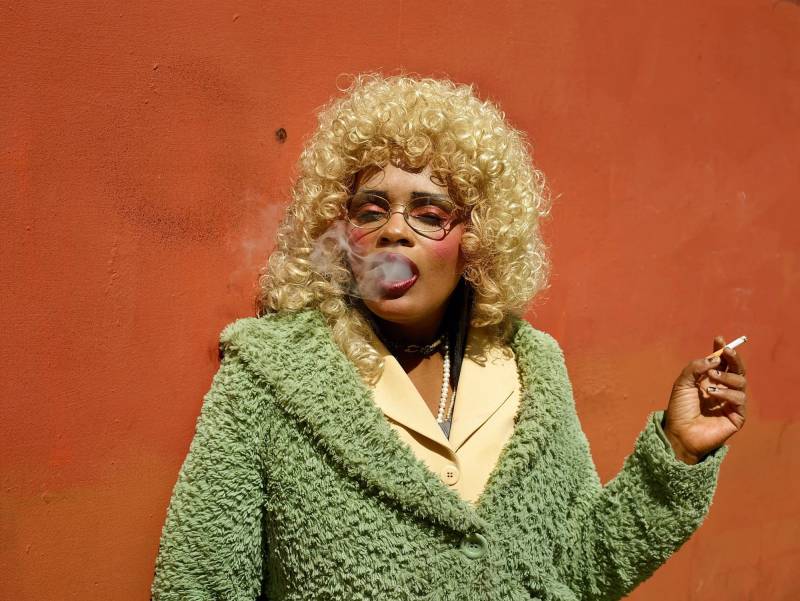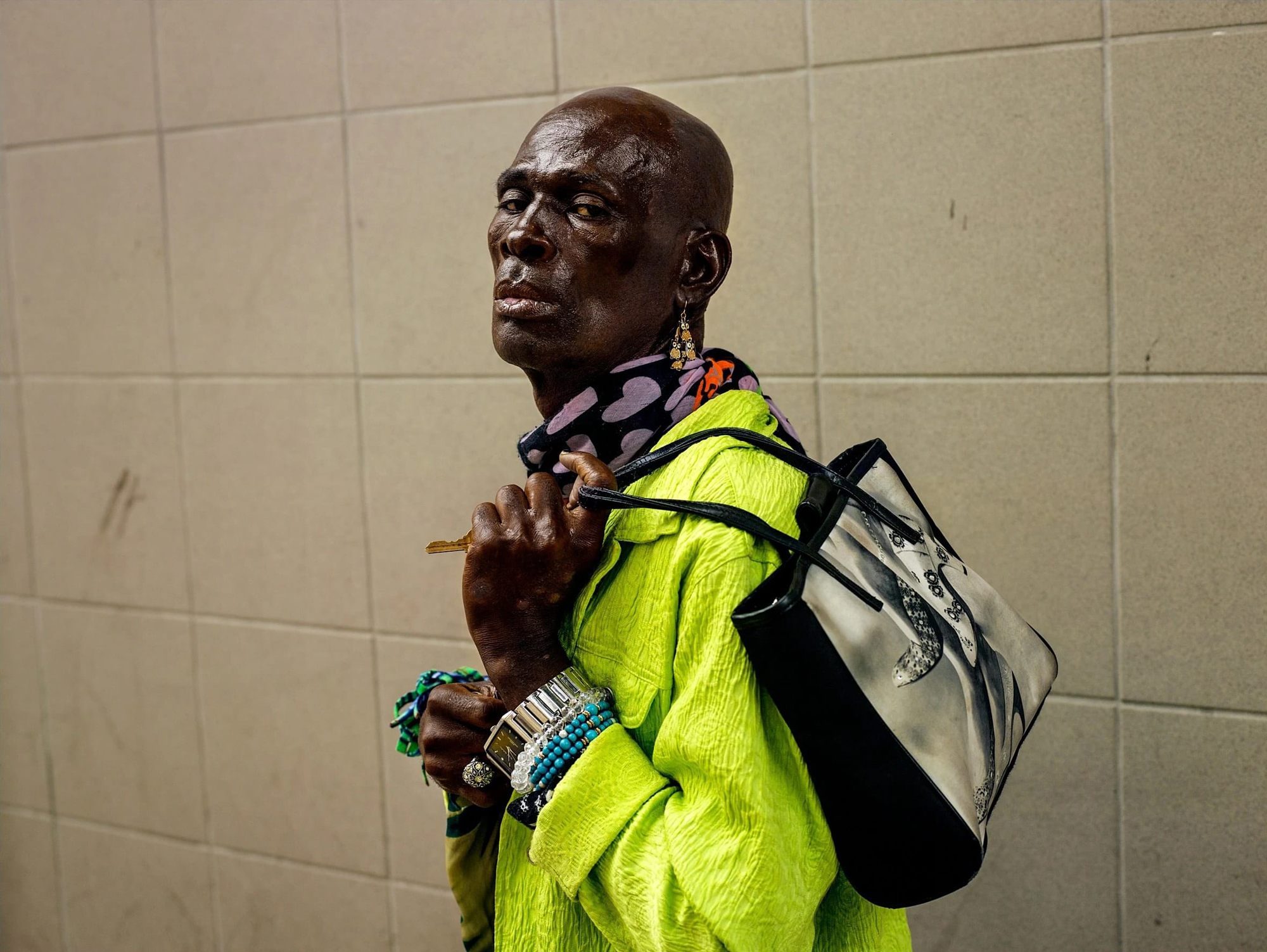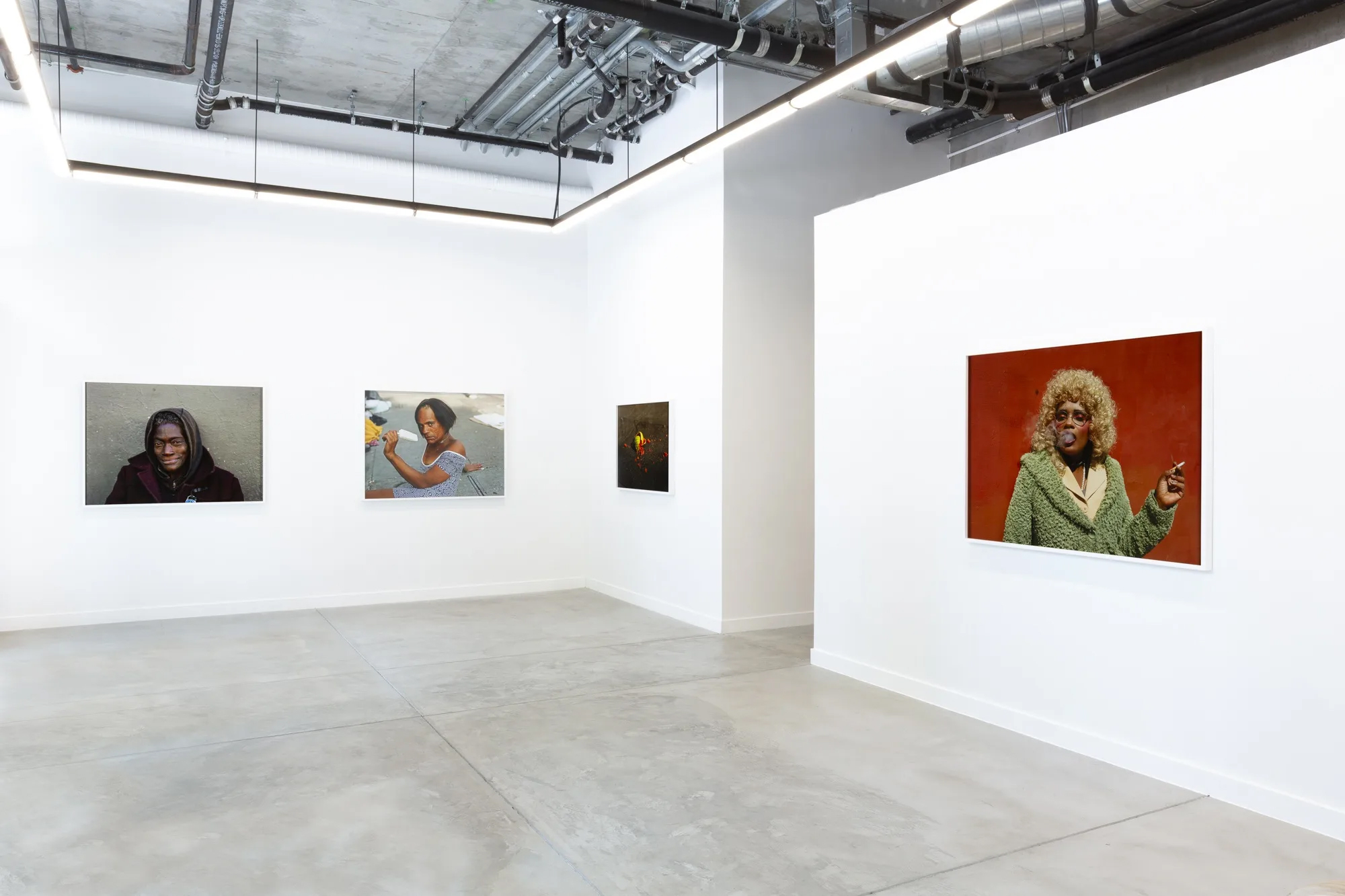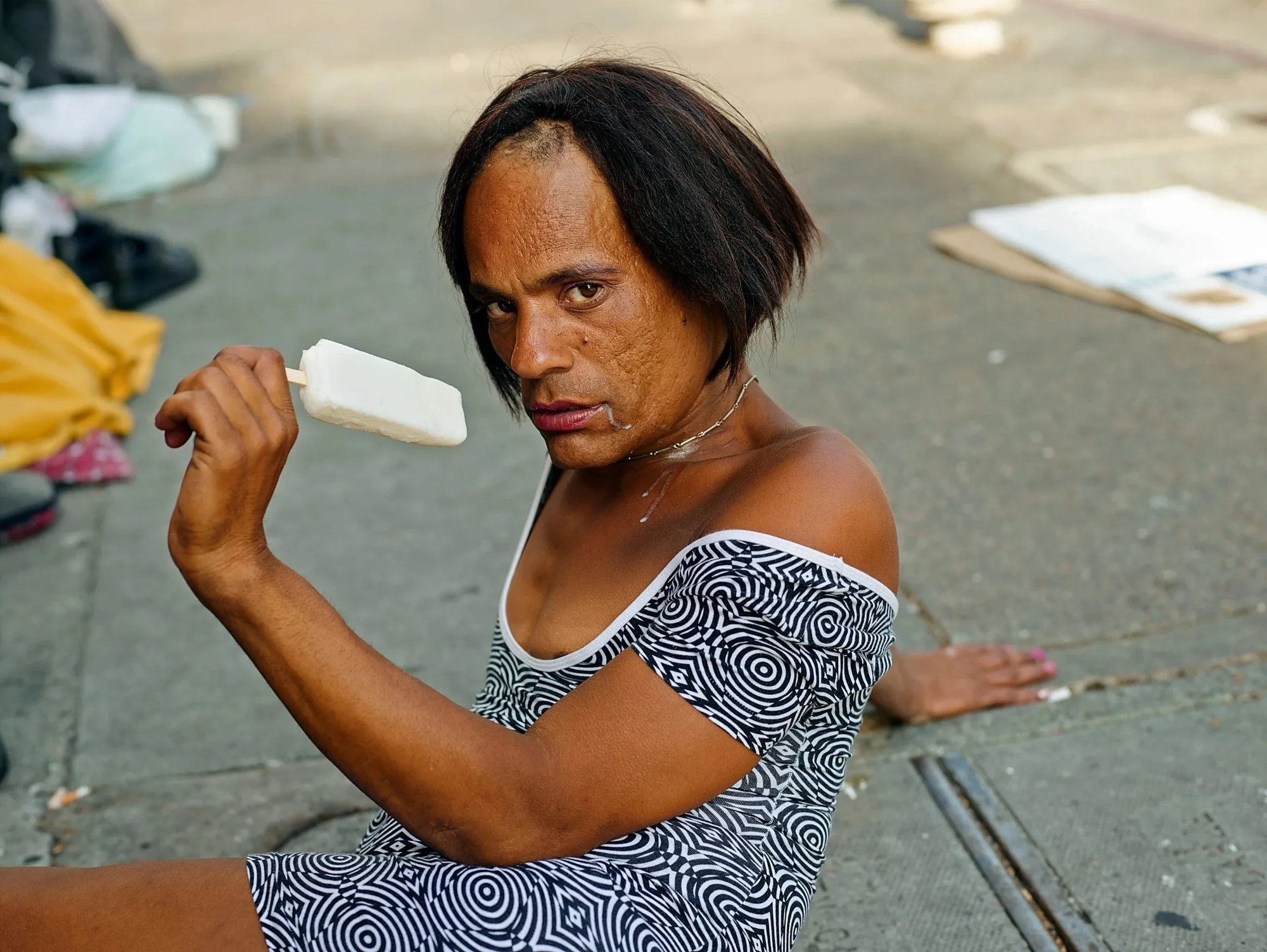A decade ago, South African photographer Pieter Hugo came to the Bay Area for a residency at Headlands Center for the Arts. He’d been to the city once before, as a teenager, when he had the formative experience of his first mugging. He was planning on using his time at Headlands to organize his archive, having just made the shift from film to digital photography. Instead, he photographed residents of San Francisco’s Tenderloin neighborhood.
Decade-Old Tenderloin Portraits Glow With Multidimensional Light

A selection from the series, titled Californian Wildflowers, is on view for the first time in San Francisco at Jonathan Carver Moore’s eponymous Market Street gallery, in the very neighborhood where the work was made. The show coincides with an expansive monograph of the same title, forthcoming from TBW Books. The series shines an ebullient light on a neighborhood central to the high-profile narrative of San Francisco’s demise, and makes a case for its vibrant humanity.
The prints in the show, all untitled, offer their subjects up larger than life, both in physical scale and personal demeanor. A woman clad in a fur coat and curly blonde wig dramatically puffs a cigarette through metallic red lipstick, matching her heavy eyeshadow, echoing the orange wall behind her. A man in a bright green coat and scarf with a pattern of purple hearts practically vogues for the camera, a purse slung jauntily over one shoulder. He’s also prominently clutching keys in his hand, giving an added weight to his air of superior, if theatrical, defiance.

Where local artists like Amos Gregory, who has also photographed residents of the Tenderloin extensively, utilize the context of the studio setting to emphasize his subjects’ dignity, Hugo shoots them in their own element. A striking aspect of the series is how contemporary it looks; these pictures could have been taken yesterday.
One subject reclines seductively on the sidewalk, holding a dripping popsicle to their lips. Personal belongings and the corner of a tent can be seen in the background, just out of focus. In another shot, a tough-looking greaser holds his chihuahua up to his face for a kiss; his knuckle tattoos read FUCK COPS. It is in these contrasts that Hugo’s subjects reveal themselves, undefined by their circumstances as much as they remain the very fabric of the neighborhood.
The issues the work raises dip into both art history and local politics. Both concern the agency of the people pictured.
On the art historical side, there’s a question of ethics and exploitation. Some subjects — those included in this exhibition — were willing participants, clearly posing for the camera, while others in the larger series were clearly not, and can be seen experiencing episodes of mental illness. In the case of willing participants, portraiture offers its subjects an opportunity to be seen on their own terms. Even so, there’s an argument to be made that this kind of photography exploits its subject’s hardships for art’s sake. Such concerns are one of the reasons Hugo sat on the work for so long.

“Photography is inherently voyeuristic,” Hugo says. “That’s its problem, but also its energy. And you’re never going to resolve that.”
In two different pictures hanging on opposite walls of the gallery, women stare earnestly at the camera, one smiling, one frowning, both less interested in the opportunity to perform than with the chance to be seen. Their elegiac expressions reveal a lack of any pretense, just an attempt to make a direct connection with the camera. Were they yearning to be seen? Could they know their likenesses would hang on a gallery wall, 10 years later? Or were they imploring Hugo for something — something more than a picture?
Representation, agency and their underlying power dynamics have long troubled documentary photography, and raise questions perhaps as tired as they are essential to the discourse. There’s a grand tradition of photographers turning their lenses on subjects less fortunate than themselves, including Diane Arbus, who photographed social outcasts; Jim Goldberg, who documented teen homelessness with Raised by Wolves; or Katy Grannan, whose series Boulevard presents strangers the artist met on the streets of San Francisco and Los Angeles.

Questions of agency and representation are also part of the larger narrative surrounding the Tenderloin, where unhoused residents are often described with dehumanizing rhetoric. San Francisco officials have recently intensified sweeps of homeless encampments under threat from Governor Gavin Newsom. In January, the city’s Department of Homelessness and Supportive Housing identified 8,323 people as unhoused in the annual point-in-time count, including 1,198 unhoused youth.
“People are going to have to go somewhere,” Hugo says, speaking to the potential ineffectiveness of the sweeps and echoing the sentiments of unhoused individuals themselves. “You might as well actually deal with the issue because it’s not going to just go away.”
Californian Wildflowers insists on the presence of people who the less marginalized apparently don’t want to see. Hugo’s photographs cast them in a multidimensional light, making clear the humanity of a community, all too often overlooked, even by fellow San Franciscans.
“People in the surrounding neighborhoods look at the people in the Tenderloin like they’re so different from them,” says Moore, who has lived in the neighborhood since moving to San Francisco in 2016. “I don’t see it that way. When I lived at Golden Gate and Larkin, in the thick of the Tenderloin, there was open drug dealing and things happening out there and those were the same people who would open the door for me to get into my building when I was carrying groceries.”
There’s beauty here, Hugo’s work shows us. What does it tell us about ourselves that it may take the reframing of that beauty as art in order for us to see it?
‘Californian Wildflowers’ is on view at Jonathan Carver Moore (966 Market St., San Francisco) through Nov. 9, 2024.

